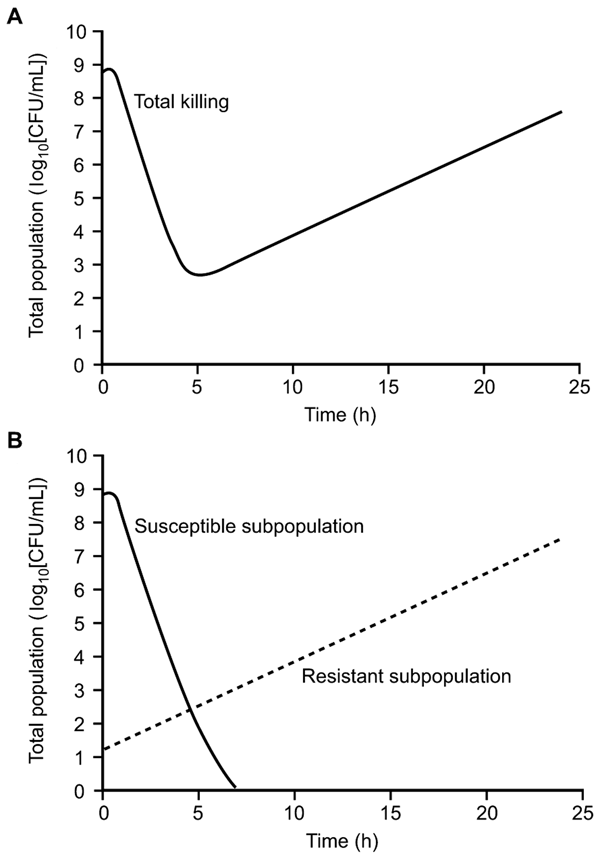Volume 12, Number 2—February 2006
Perspective
Antimicrobial Drug Resistance, Regulation, and Research1
Figure 5

Figure 5. Killing pattern for a fluoroquinolone against Pseudomonas aeruginosa that illustrates how the initial decline and subsequent regrowth observed in the total number of colony-forming units (A) represent the sum of a decline in the susceptible subpopulation and the uninhibited growth of a resistant subpopulation (B).
1This article is based on presentations and discussions held at the Second Colloquium of the International Forum on Antibiotic Resistance (IFAR), held on September 13, 2003, in Chicago, Illinois, USA. IFAR is a multidisciplinary, international group concerned with evaluating current knowledge regarding antimicrobial drug resistance and the means for its control. This article represents the opinions of the participants at the second IFAR colloquium and not necessarily those of the institutions for whom they work.